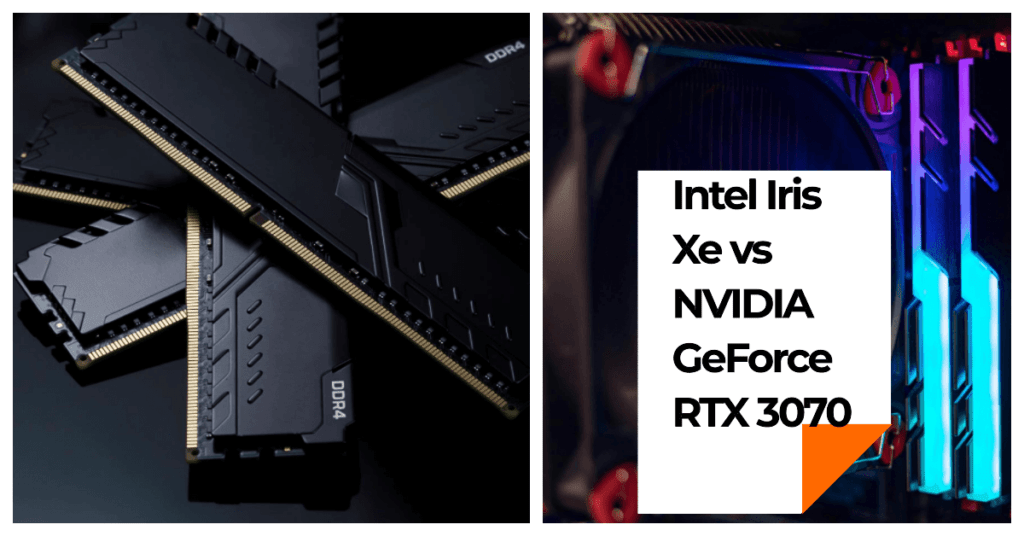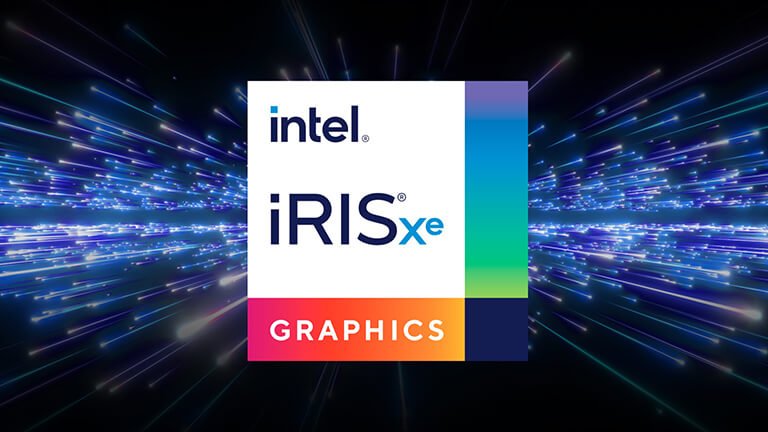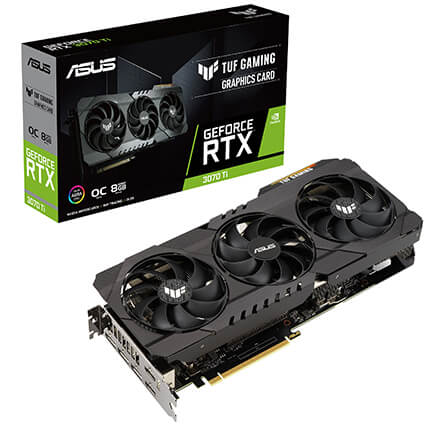Intel Iris Xe vs. NVIDIA: A Battle of Graphics Power
Graphics cards, or Graphics Processing Units (GPUs), are an essential component that can significantly impact the performance of a PC. From gaming and CGI animation to video editing and machine learning, the demand for high-speed, high-resolution images is ever-increasing. In this article, we will explore the key features of Intel Iris Xe and NVIDIA graphics cards, comparing their specifications and performance, to help you make the best choice for your machine.
- Intel Iris Xe vs. NVIDIA: Side-by-Side Comparison
- What’s the Difference Between the Intel Iris Xe and Nvidia?
- Benchmarking the Intel Iris Xe Graphics Card vs Nvidia GeForce RTX 3070
- Intel Iris Xe: Unleashing the Power Within
- NVIDIA Graphics Cards: The Powerhouse of Gaming
- Intel Iris Xe vs. NVIDIA: The Showdown
- Conclusion
Intel Iris Xe vs. NVIDIA: Side-by-Side Comparison
| Specification | Intel Iris Xe | NVIDIA GeForce RTX 3070 |
|---|---|---|
| Model | Intel® Iris® Xe Dedicated Graphics Card | Nvidia GeForce RTX 3070 |
| Initial release | January 26, 2021 | September 17, 2020 |
| Influential developers | Intel | NVIDIA |
| Graphics Max Dynamic Clock | 1500MHz | 1500MHz (base clock), 1725MHz (boost clock) |
| PCI Express Configurations | PCI Express 4.0 (x4) | PCI Express 3.0 and 4.0 |
| TDP | 28W | 220W |
| Graphics Memory Speed | 267Gbps | 1750MHz, 14Gbps effective |
| Graphics Memory Bandwidth | 68GB/s | 448GB/s |
| Graphics Memory Interface | 128-bit | 256-bit |
| Graphics Memory Size/Type | Shares system memory | 8GB of GDDR6 |
| Graphics Output | HDMI 2.0b/DisplayPort 1.4 w/ HDR | HDMI 2.1/DisplayPort 1.4a |
| Max Resolution (HDMI) | 4096 x 2160 at 60Hz | 1920×1080 / 2560×1440 / 3840×2160 |
| Max Resolution (DisplayPort) | 7680 x 4320 at 60Hz | 7680 x 4320 at 60Hz |
| DirectX Support | 12.1 | 12 |
| Vulkan Support | 1 | 1.3 |
| OpenGL Support | 4.6 | 4.6 |
What’s the Difference Between the Intel Iris Xe and Nvidia?
Intel and NVIDIA are both renowned for their performance graphics cards, but NVIDIA is often regarded as the market leader due to its specialization in developing extremely powerful graphics processors. Intel's Iris Xe Graphics, while competent, is targeted at the consumer and entry-level market. It is not designed to compete with NVIDIA's gaming-class GPUs. One significant difference is that Intel Iris Xe does not have its own dedicated video memory, as it is integrated with the main Intel CPU. This can be a limiting factor for memory-intensive tasks compared to NVIDIA's dedicated graphics cards with dedicated VRAM.
Benchmarking the Intel Iris Xe Graphics Card vs Nvidia GeForce RTX 3070
Various enthusiasts have conducted GPU benchmarking on both the Intel Iris Xe graphics card and the Nvidia GeForce RTX 3070, revealing marked differences in speed, efficiency, and performance. According to over half a million user builds on UserBenchmark.com, the Nvidia GeForce RTX 3070 outperforms the Intel Iris Xe by a significant margin in various aspects:
- The Nvidia GeForce RTX 3070 achieves speeds over 900% faster than the Intel Iris Xe, especially in effective 3D speeds desired by gamers.
- Nvidia's card dominates in all areas of GPU performance, including lighting speeds (+1,149% faster), reflection handling (+762% faster), gravity/NBody calculation (+551%), and multi-rendering (+1,091%).
- The visual quality, resolution, and responsiveness of real-world image sequences from Nvidia's card are superior, with the Intel Iris Xe scoring lower on fine detail and texture. Additionally, Nvidia's GPU excels in advanced rendering techniques like path tracing.
Intel Iris Xe: Unleashing the Power Within
Intel Iris Xe represents Intel's integrated graphics solution, boasting significant improvements over its predecessors. Designed to deliver enhanced graphics performance, Iris Xe is commonly found in laptops and some desktops. Let's delve into its key features:
Key Features of Intel Iris Xe
- Xe Architecture: Intel Iris Xe leverages the Xe architecture, enabling better scalability and improved efficiency in handling graphics-intensive tasks.
- Enhanced Integrated Graphics: Intel Iris Xe offers a notable boost in graphical performance, making it a compelling option for casual gamers and multimedia enthusiasts.
- AI Acceleration: With built-in AI acceleration, Intel Iris Xe optimizes various applications, resulting in improved performance and efficiency.
- Adaptive Sync Technology: Iris Xe supports adaptive sync, minimizing screen tearing and stuttering, ensuring a smoother visual experience during gaming and multimedia playback.
Moreover, Intel Iris Xe gains an advantage in power efficiency and thermal performance, given its integration with Intel's processors. This feature makes it an excellent choice for laptops and compact devices where thermal constraints are critical.
NVIDIA Graphics Cards: The Powerhouse of Gaming
NVIDIA, on the other hand, is renowned for developing high-performance graphics cards tailored explicitly for gaming enthusiasts. With cutting-edge technology and impressive graphical prowess, NVIDIA cards have become the go-to choice for hardcore gamers and professional content creators. Let's explore their key features:
Key Features of NVIDIA Graphics Cards
- NVIDIA Architecture: NVIDIA builds its graphics cards on the latest architectures, such as Ampere or Turing, delivering superior performance and advanced ray-tracing capabilities.
- Dedicated VRAM: Distinguishing themselves from integrated solutions, NVIDIA cards come with dedicated VRAM, ensuring faster data access and rendering speeds.
- Ray Tracing Technology: NVIDIA's RTX series integrates real-time ray tracing, creating stunningly realistic lighting and reflections in supported games and applications.
- DLSS (Deep Learning Super Sampling): NVIDIA's DLSS, powered by AI, enhances gaming performance by using machine learning to upscale lower resolution images.
When it comes to pure gaming performance, NVIDIA's dedicated graphics cards outshine Intel Iris Xe, especially in handling resource-demanding games and rendering complex 3D environments.
Intel Iris Xe vs. NVIDIA: The Showdown
Now, let's compare Intel Iris Xe with NVIDIA graphics cards in several essential aspects to determine their strengths in specific scenarios:
Performance and Gaming
In terms of pure gaming performance, NVIDIA's dedicated graphics cards hold the upper hand, especially when handling resource-demanding games and rendering complex 3D environments. For hardcore gamers and professional content creators seeking top-tier performance and ray-tracing capabilities, NVIDIA remains the optimal choice.
On the other hand, Intel Iris Xe provides a competitive edge in the integrated graphics domain. It delivers surprisingly good performance for its category, making it a fantastic option for casual gamers, students, and business professionals who require moderate graphical capabilities without sacrificing power efficiency.
AI and Machine Learning
Intel Iris Xe's AI acceleration capabilities give it a significant advantage in certain scenarios. Applications that leverage AI technology, such as video encoding and decoding, image processing, and certain creative software, can benefit from the improved performance and responsiveness offered by Intel Iris Xe's AI acceleration.
Conversely, NVIDIA's dedicated Tensor Cores make their RTX series a dominant force in AI and machine learning tasks. Content creators working with AI-driven applications, developers using AI frameworks, and professionals involved in data science may find NVIDIA's cards more suitable for their specialized needs.
Power Efficiency and Thermal Performance
Intel Iris Xe takes the lead in power efficiency and thermal performance, thanks to its integration with Intel's processors. Being an integrated solution, it consumes less power and generates less heat compared to NVIDIA's standalone graphics cards. This attribute makes Intel Iris Xe an excellent choice for laptops and other compact devices where thermal constraints are crucial.
Conclusion
In conclusion, the choice between Intel Iris Xe vs NVIDIA graphics cards depends on your specific requirements and intended usage. If you are a hardcore gamer or a professional content creator seeking top-notch performance and ray-tracing capabilities, NVIDIA remains the optimal choice. However, for casual gaming, multimedia usage, and tasks that benefit from AI acceleration, Intel Iris Xe emerges as a competitive and power-efficient solution.
Remember, the best graphics solution for you is the one that aligns with your needs and budget. Both Intel and NVIDIA have crafted impressive products that cater to different user demographics. Evaluate your requirements carefully, and you'll find the ideal graphics solution that perfectly fits your demands.






